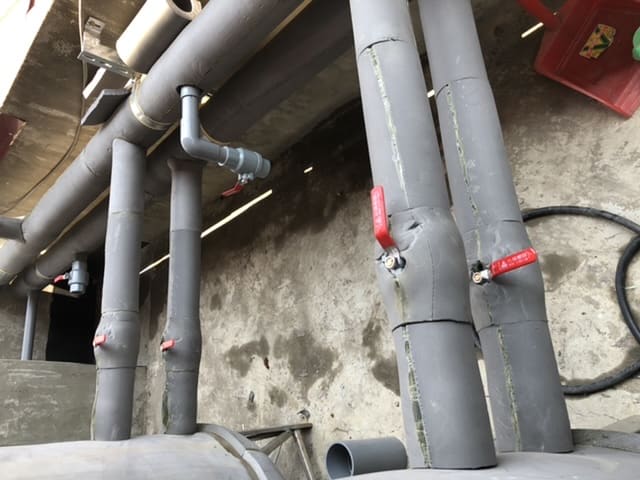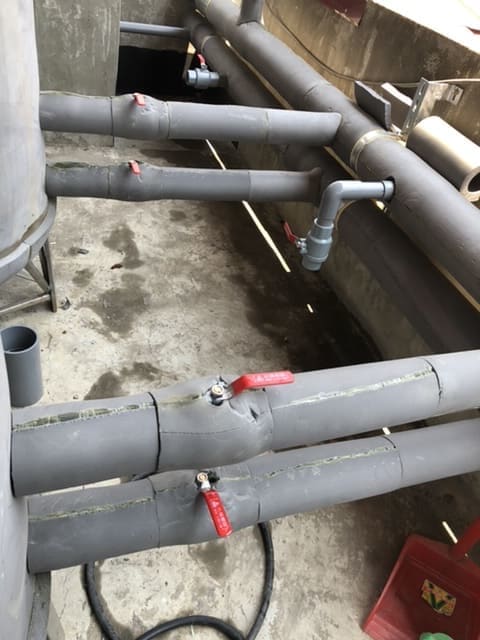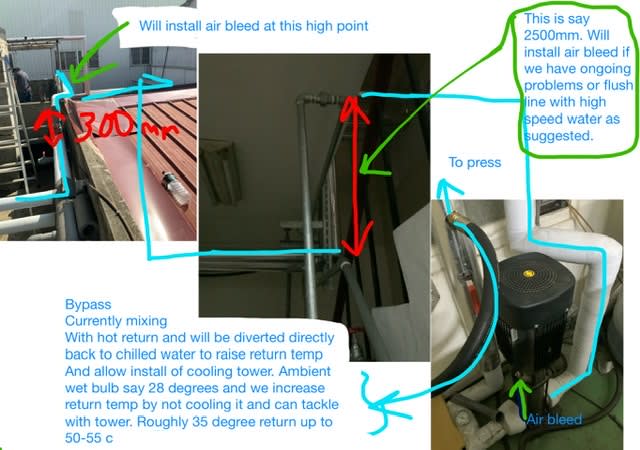Hi, I’m in Taiwan and language problems limit the help I can get. We have a chiller pump line gravity fed from 4 floors above. Yesterday it stopped pumping and then started after air bleed 2 hours later. Chill water is 14 to degree Celsius.
I can’t see it is the PVC pipes my Taiwanese associate is blaming. Reason is I’d be hard pressed to design something that sends air 30ft down a 2” line to a pump.
Only other information I can add is it’s also returning 30ft back up to chiller tank of 3000 litres.
Pump grundfos CRI5-13A FJG A E HOOE 2 YEARS OLD USED 50 HOURS EACH WEEK
I can’t see it is the PVC pipes my Taiwanese associate is blaming. Reason is I’d be hard pressed to design something that sends air 30ft down a 2” line to a pump.
Only other information I can add is it’s also returning 30ft back up to chiller tank of 3000 litres.
Pump grundfos CRI5-13A FJG A E HOOE 2 YEARS OLD USED 50 HOURS EACH WEEK



